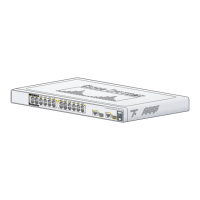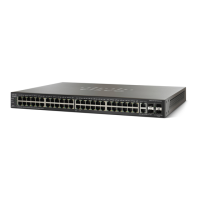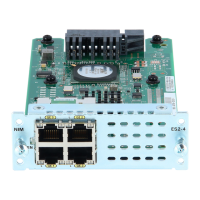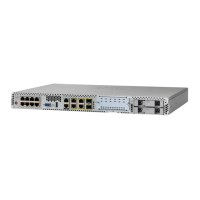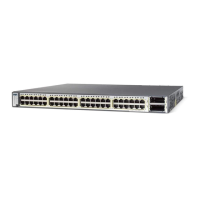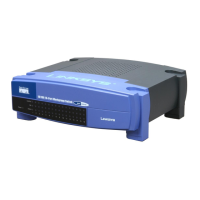Managing Smart Ports
Configuring Smart ports for Printers
ESW 500 Series Switches Administration Guide 82
3
• Trunk Native VLAN ID — Indicates the VLAN to which the port belongs. The
default is VLAN 1 – the user can change this VLAN by selecting one of the
created VLANs via the drop down list.
• Port Security Mode — Defines the locked port type. The field value is:
Dynamic
Lock
.
• Max MAC Addresses — Indicates the maximum number of MAC addresses
that can be learned on the port. A maximum of three MAC addresses can be
learned on the port.
• Port Security Action — Indicates the action applied to packets arriving on a
locked port. The value is:
-
Discard
— Discards packets from any unlearned source. This is the
default value.
• Violation Trap Every — Indicates that traps are sent every 60 seconds.
• Broadcast Storm Control — Indicates the percentage of Broadcast Storm
Control enabled on the port. The value is 10% of the port speed.
• Spanning Tree Port Fast — Indicates Fast Link is enabled on the port. If Fast
Link mode is enabled for a port, the Port State is automatically placed in the
Forwarding state when the port link is up. Fast Link optimizes the STP protocol
convergence. STP convergence can take 30-60 seconds in large networks.
• Spanning Tree BPDU Guard — Indicates if BPDU Guard is enabled on the
interface.
• QoS Policy — Indicates that the default QoS policy settings are applied to the
port. The Default policy is voice-map.
• Macro Description— Indicates the type of device connected to the port. For
printers, this field is always
Printer.
STEP 6 Select a VLAN in the
VLAN ID
dropdown box.
STEP 7 Click Apply. The Server port settings are saved, and the device is updated.
STEP 8 Click OK. The
Smart ports Setting
page opens.
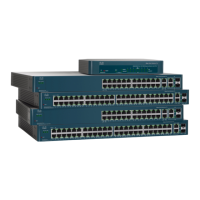
